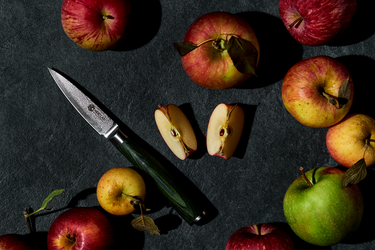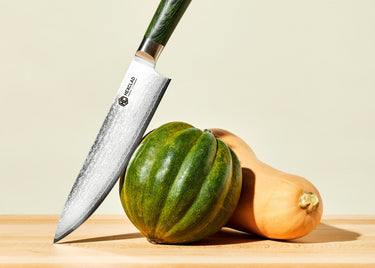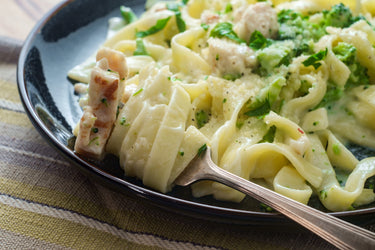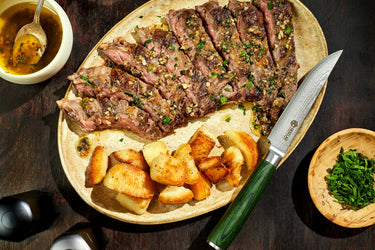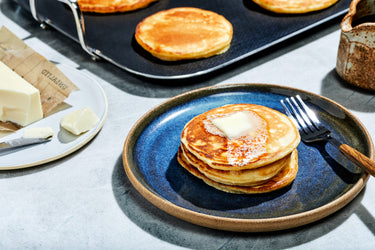12 Cooking Methods & Techniques To Level Up in the Kitchen
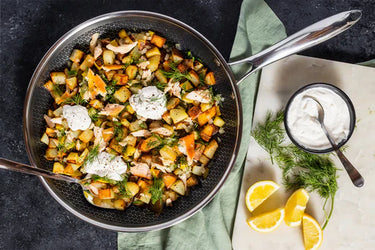
Gordon Ramsay himself will tell you that every great dish comes down to perfecting technique. That’s why, in culinary school, you must learn how to cut veggies before you learn any recipe.
If you’re a home chef and you consider yourself a killer in the kitchen, you’ll want to get these techniques down ASAP.
Why It’s Important To Learn New Techniques
Everything you know and understand about the world around you boils down to what you’re been taught or what you’ve learned on your own. That same rule applies to food.
Understanding these techniques will help you prepare tastier, more properly executed meals for yourself and your family. They’ll also provide you more context about items you see on menus at restaurants.
If you’ve ever strayed away from a dish just because you weren’t sure what the cooking term meant or how to pronounce it, by the end of this read, that won’t be a worry anymore.
Cooking With Dry Heat
The first of the basic cooking methods is dry heat cooking methods. This is heat that is absent of moisture or water. If you like to cook, you do this all the time. It’s a group of the most basic culinary techniques.
But don’t let that fool you. Just because you’ve tried it doesn’t mean you’ve mastered it.
Broiling
Broiling works by putting your pan in the oven to apply direct, high heat to foods. This can create a charred look on the outside without cooking the food all the way through. It is commonly used as a finishing technique for foods.
It’s an easy trick to add a little extra color to your foods, but you need to take great care with this method. First, not all pans can withstand this type of heat, so ensure that your cookware is meant for oven use, even if just for this cooking method.
Second, keep a close eye on your food while broiling it, as it is easily burned if you aren’t watching. The heat is high and while it may take a moment to turn that golden brown color, it will turn darker quickly once it does.
Grilling
Grilling also implies applying direct heat from a high-heat source to cuts of meat or other food items, and it is typically done outside. For those with gas ranges, you may be able to mimic this technique on your range using a cast iron skillet or griddle pan.
Using a grill is pretty straightforward, but you have to watch your food and be careful about how you heat up your grill, as you’re dealing with remarkably high temperatures. Apply too much heat in the beginning and your food will burn on the outside and stay completely raw in the middle.
In addition, choosing the right seasonings and knowing when to switch from low heat to higher temperatures can help you transform even tough cuts of meat into masterpieces.
Roasting
Roasting means cooking an item in the oven using indirect heat. Here, heat is applied to the entire area surrounding the food and provides even cooking and browning for your dish. This is a perfect technique for veggies like green beans, zucchini, and root vegetables to get that crispy texture without deep-frying.
The most commonly roasted items are whole chicken or chicken breasts. Recipes may also ask you to sear foods on the range, and then transfer them to the oven to complete cooking. This is so your food will be brought up in temp without adding much more color to the exterior.
Baking
Baking is similar to roasting, but it is a term reserved for desserts, breads, and layered dishes that cook at lower temperatures than certain types of cooking methods.
Sautéing
To sauté a dish is to apply direct heat from the range to a pan and cook food with the use of a small amount of fat. This hot oil or hot fat will heat up and transfer that heat to the food while cooking.
Sautéing food will cook your dish evenly and brown the food thoroughly when executed properly. An ideal example of sautéing is caramelized onions with a small amount of oil. Though these may seem easy, you have to use a lot of care and patience to soften all the onions equally without burning them or turning them into mush.
As a rule of thumb, don’t toss or stir food too much or overcrowd the pan. You’ll also want to ensure that the oil and pan are hot before adding any food.
Learning how to sauté like the Gordon Ramsay can open up more advanced techniques that utilize the same oil and pan methods like pan-frying or stir-frying.
With these techniques, you still use a small amount of fat in the pan but on higher heat. This cooks the outside of the food faster than the inside right in the pan instead of the oven. This Chicken Piccata recipe from our Hexclad chefs is a great first recipe to try with this technique.
Moist Heat Cooking Methods
Moist heat utilizes a liquid or broth to help cook foods. This method is best used when you need to tenderize or soften the foods you’re preparing.
These methods are typically used with meats and thick, starchy vegetables, although you’re not totally limited to this.
Poaching
Poaching foods is perfect for cooking foods that need a soft hand, as they’re delicate and break easily. This includes items like eggs or flaky fish that will fall apart when cooked on higher, more direct heat.
Use a kitchen thermometer to maintain a low but consistent temp of your poaching liquid for flawless execution of this technique.
Simmering
Simmering is truly an art form. It requires temps that are higher than poaching but lower than boiling.
When a liquid is simmering, you’ll see small bubbles forming on the top. These bubbles should maintain a consistent size. When they get larger, that means the temperature is too high and your food has crossed over to boiling.
Simmering is best for items like rice, soups, and beans with a slightly longer cooking time.
Boiling
Boiling requires a higher heat than simmering and poaching and requires the liquid to bubble rapidly. This is a technique most commonly seen with cooking dishes like pasta or eggs cooked in their shells.
Steaming
Steam cooking also utilizes boiling water; however, there is not much water in the pan, so the heated steam does the cooking instead of the hot water. Vegetables and delicate fish are often steamed. There are also steaming recipes for some breads, desserts, and filled foods like tamales or dumplings.
Cooking With Combination Heat
Combination heat uses both dry and moist heat to cook food. Here are our last two cooking methods:
Braising
Braised foods are first seared on the stovetop. Then they are submerged in a broth or stock and transferred to the oven for a few hours of cooking at a low temperature. Sometime to note is that you usually won’t actually eat the braising liquid.
This is particularly important for items like tough meats and strong vegetables. The technique will soften them while also amplifying their natural flavors.
Stewing
Stews are made by slowly cooking food in a broth over a long period of time in a large pot. It is similar to braising but you don’t discard the liquids after cooking the other ingredients, as the broth is part of the final product.
Many stew ingredients like beef are browned at the bottom of the pot with more direct heat for added texture and flavor before the pot is filled with liquid.
Top Cooking Terms You Need To Know
There are also a lot of key terms that you should know when learning to perfect your cooking techniques. These will come up in restaurants and in recipes, so knowing their full definition will make things easier for you:
- Al dente: Pasta that, when fully cooked, still has a some firmness
- Basting: Pouring fatty liquids over food while it cooks to encourage flavor and juiciness.
- Blanching: Cooking foods in boiling water for a short time and then dunking them in ice water to stop the cooking process.
- Clarify: Cooking butter until the fatty solids are separated.
- Cure: Preparing foods by adding salt to eliminate any moisture.
- Emulsify: Blending two liquids together, like oil and water, with the help of a liquid agent.
- Filet: Cutting a portion of protein, like fish or meat
- Flambé: Covering food in alcohol and then lighting it on fire until the alcohol burns off.
- Julienne: Cutting vegetables on an angle producing even, long, thin strips
- Parboil: Cooking foods partially in boiling water before finishing with another technique.
How Can the Right Cookware Make a Difference?
These techniques and cooking methods are great to know but can be a pain to execute without the right pots and pans. If you’ve invested in HexClad cookware, you’re in the right hands. If you haven’t done so yet, here’s why you need to.
Our pots and pans are made utilizing tri-ply layering system with two stainless steel exterior layers and an aluminum core. This will give you a cooking surface that heats evenly and quickly. Plus, with our peaks and valleys pan design, our pans are non-stick without the need for flaky PTFE coatings.
Some foods are high in acidity or pH. When you cook these foods in reactive pans, they will leach and impart chemical discoloration and taste into your foods. HexClad pans are nonreactive so your food is always safe. They’re also extremely durable and dishwasher safe for a superior cooking experience every time.
Be the Master Chef in Your Kitchen
With our tips, tricks, and products in hand, it’s time to get your cooking in check and impress everyone. We are confident you’ll excel to new cooking heights with a little practice and patience (and our pans).
Sources:
